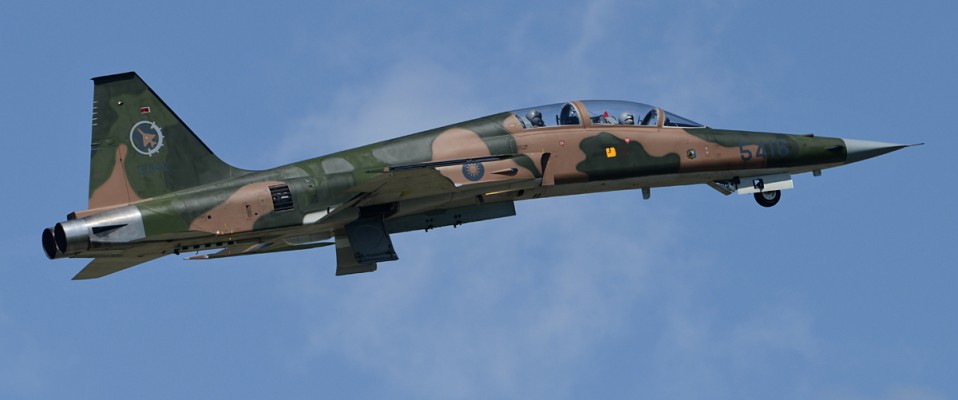Republic of China (Taiwan) Air Force (ROCAF) – 2016
Report and photos by Peter van den Berg
Last October I had the opportunity to go on a photography trip though Taiwan again. The main objective was the DRAGON exercise, to be held in late October by the Republic of China Air Force (ROCAF), or also called Ching-Kuo Kung Chuan.
Taiwan, formerly known as Formosa, has about 23 million inhabitants in an area of approximately 37,000 km². Most residents live on the west side of the island, where most military air bases can be found. The eastern side is less densely populated and has two capitals, Taitung & Hualien.
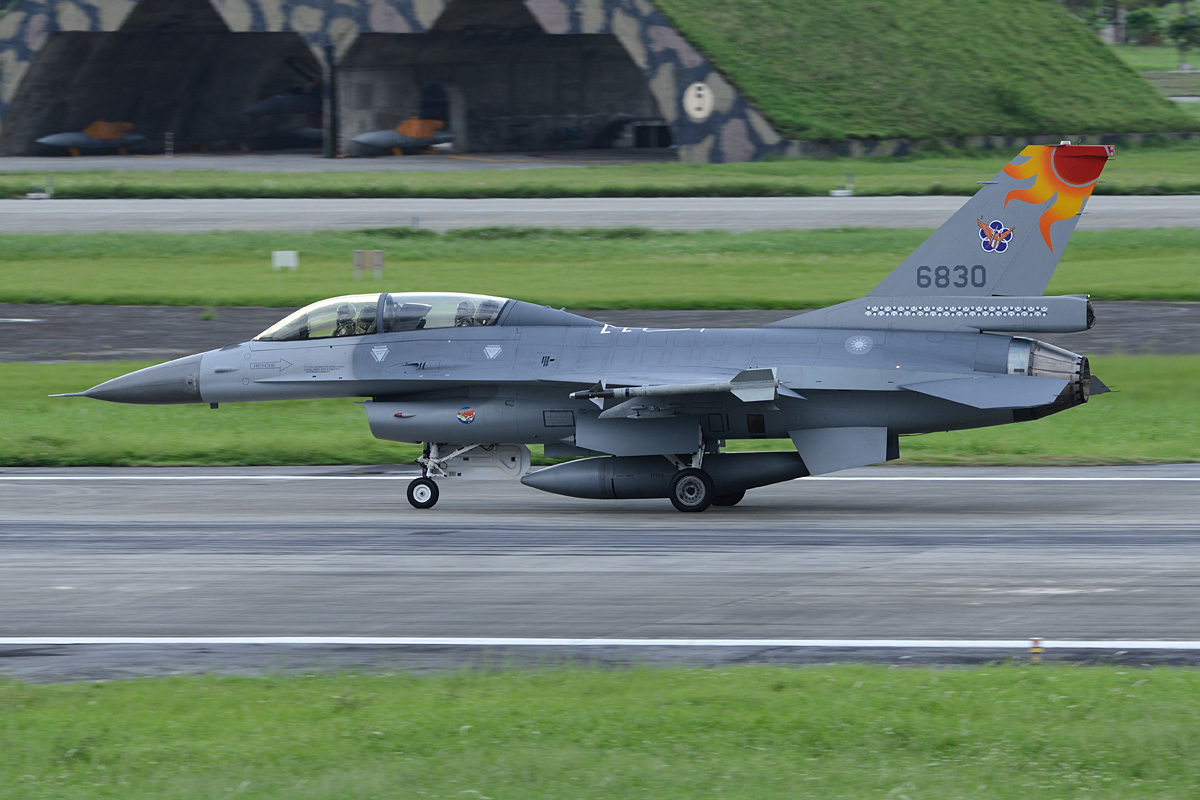
In late October 2016, the DRAGON exercise took place in Taiwan. The air force stations squadrons from the west coast to the east coast, respectively to Taitung and Hualien. In addition to these fields which were part of the DRAGON exercise, I have visited other fields on the west coast during this trip as well.
Taitung
This is, next to Hualien, a base on the east coast of Taiwan. On this base, most F-5 Tiger E/Fs are stationed. At present, there are about fifty of these on-site. The F-5Es and F-5Fs were delivered to Taiwan between 1974 & 1977, as a replacement for the F-5A and -B and the F-100 Super Sabres. The A/B types left the ROCAF in the 90s.
The air base features aircraft caverns in the mountains, as we know from Switzerland. Besides Taitung, Hualien also has these caverns located at Hualien-West. Taitung has the capability to offer shelter in the mountains for most fighter aircraft during exercises or actual threats. The caverns were used extensively throughout the exercise.
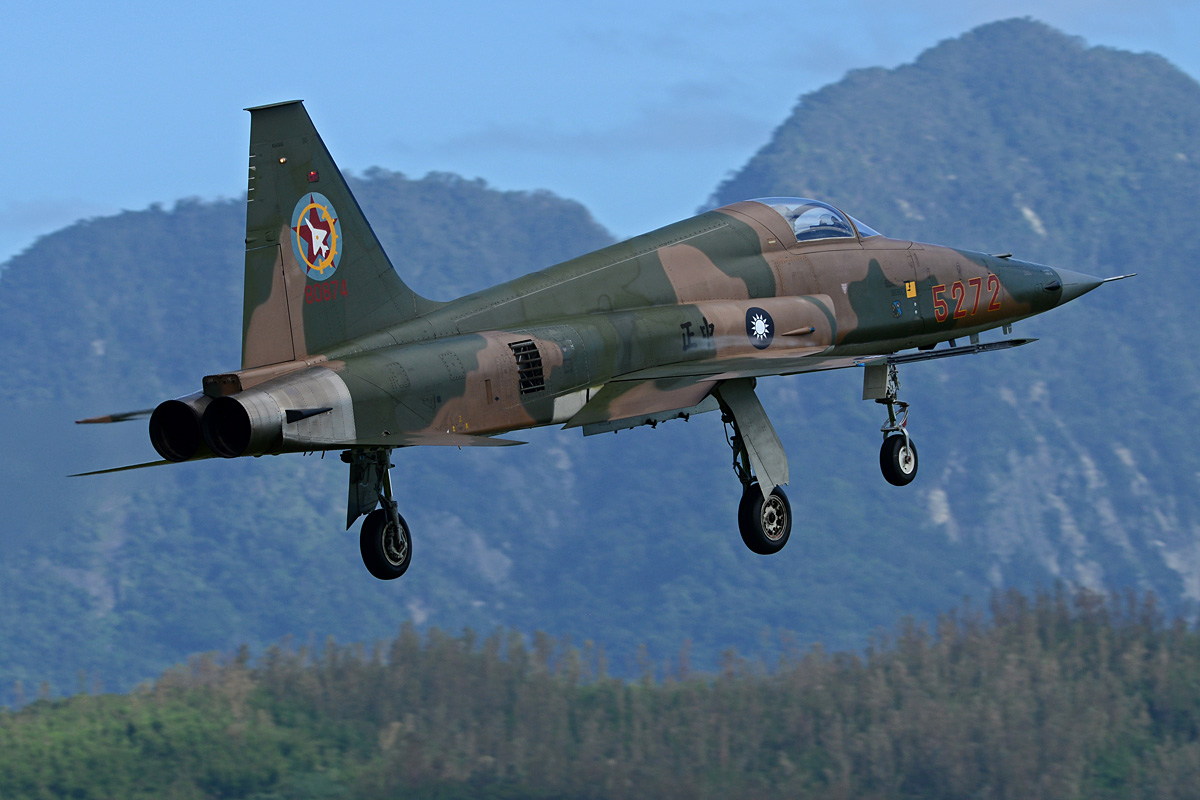
Besides a small role as aggressor, Taitung’s main task is training pilots to become fighter pilots. Trainees fly about 80 hours in a period of around 11 months before graduation.
Stationed at Taitung with six F-CK-1 Cs were the 1st TFG, the 3rd TFG and the 9th TFG. Next to the IDFs (Indigenous Defense Fighter as the Taiwanese call the F-CK-1), six F-16A/Bs from the 455th TFW were also stationed at Taitung. Air power participation was expanded by the addition of F-CKs from the 28th TFG.
Per day and next to the usual missions, one mission was flown by the visitors. Air interception and air defense were the main missions. Missions had to be flown by four aircraft, to ensure completion of the mission, six fighters of every type were started.
Hualien
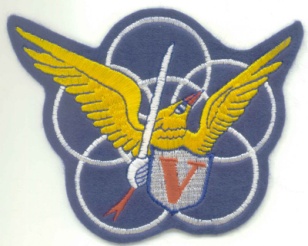
5 TFW (401 TFW)
Hualien is home to the 5th TFW. Besides the 17th TFG, the 26th TFG and the 27th TFG, it is also home to the 12th TRS. The latter flies with the F-5E/F, the RF-5 and the F-16A/B. The RF-5 was developed by Singapore Technologies Aerospace and a total of seven were delivered. Due to two crashes, only five are still left. The RF-5 has a longer nose than the standard F-5, which accommodates room for photoreconnaissance equipment. The first RF-5 has been employed by the ROCAF in 1997. The F-16 A/Bs of the 12th TRS are equipped with Phoenix Eye reconnaissance pods. Next to air-to-air and air-to-ground missions, this air base is loaded with the task of anti-shipping strikes. They are equipped with Boeing AGM-84 Harpoon missiles for this.
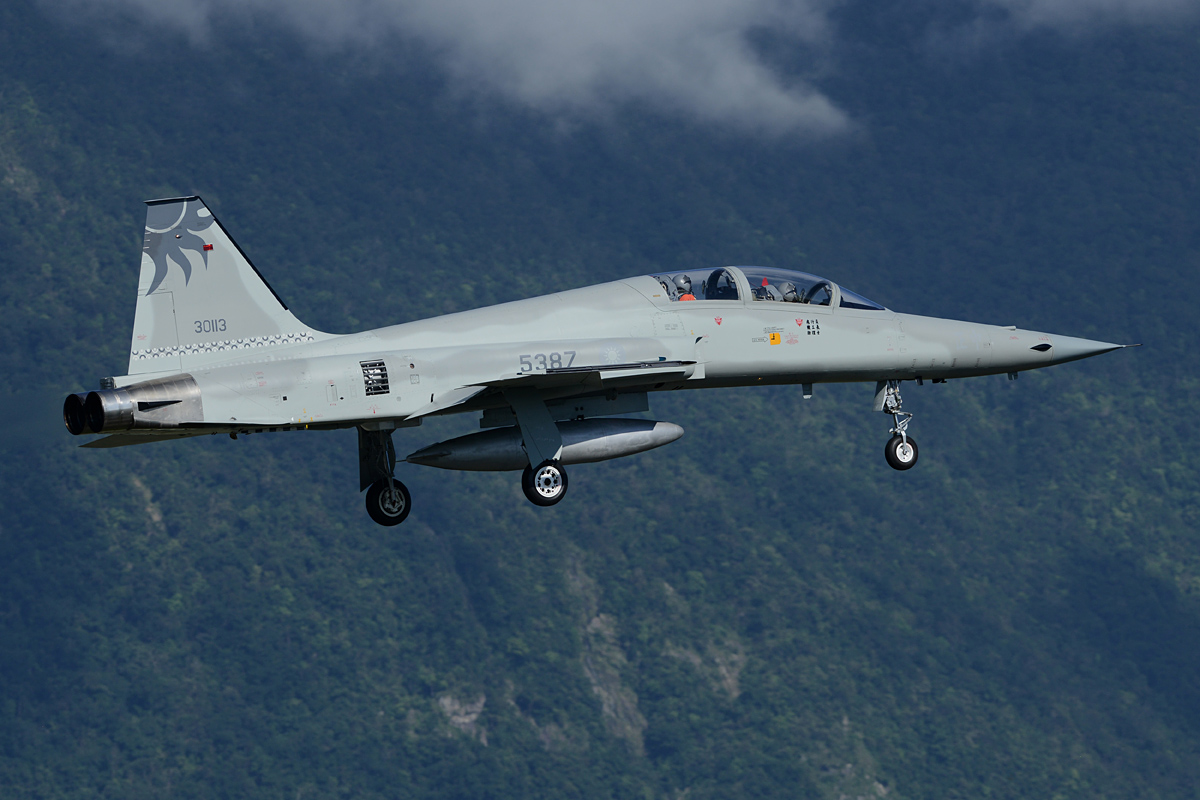
During the DRAGON exercise, Hualien was host to ten Mirages of the 2nd TFW from Hsinchu and six F-CK-1As of the 7th and 28th TFG from Taichung. Both were stationed at Hualien West. Hualien East and West are connected to each other by means of a taxiway of approximately 2 miles long. Just like at Taitung, Hualien West has the capability of offering shelter to aircraft in the mountains. The capacity here is even bigger than at Taitung. Not only the main runways at Hualien East and West were used, but also the taxiway at Hualien East was used as a landing strip for the F-16s. Some F-5s from Taitung were also stationed here, functioning as target tugs.
The F-5s primary mission today is to train young pilots in the art of fast jet flying, also known as lead-in training. Coming from the AIRDC AT-3 Tzu Chiang advanced jet trainer, the trainees arrive with jet-flying experience. Before that, they will have learned the basics on the Beech T-34C Turbo Mentor. Both types are stationed at Gangshan AFB in Tainan.
Pingtung
Pingtung is a huge field consisting of a northern and southern part. Both parts have their own runway. On the southern part the C-130s are stationed, and on the northern part the E-2T Hawkeyes, P-3 Orions and the remaining S-2T Trackers. The remaining S-2T Trackers were officially taken out of service in 2015 but are kept airworthy for possible sale. Taiwan has had a total of 37 S-2T Trackers, all of which were converted from the S-2E or S-2G while they were assigned to the ROCAF. Original conversion plans, valued at $260 million USD, called for conversion of 32 S-2Ts, (23 S-2Es and 7 S-2Gs respectively). Two S-2Gs were sent to Grumman (now Northrop Grumman) in the US for modifications up to standards of the manufacturer.
Since the C-130s were stationed at Pingtung, it was also responsible for transport with these aircraft during the DRAGON exercise.
S-2T Tracker
The maiden flight of the converted S-2T Tracker took place in July of 1998 and the first two converted aircraft returned to Taiwan in August of 1991. The rest of the fleet was converted in Taiwan itself by means of kits supplied by Grumman. Initial plan was to have 32 aircraft converted, this became 27 due to political reasons.
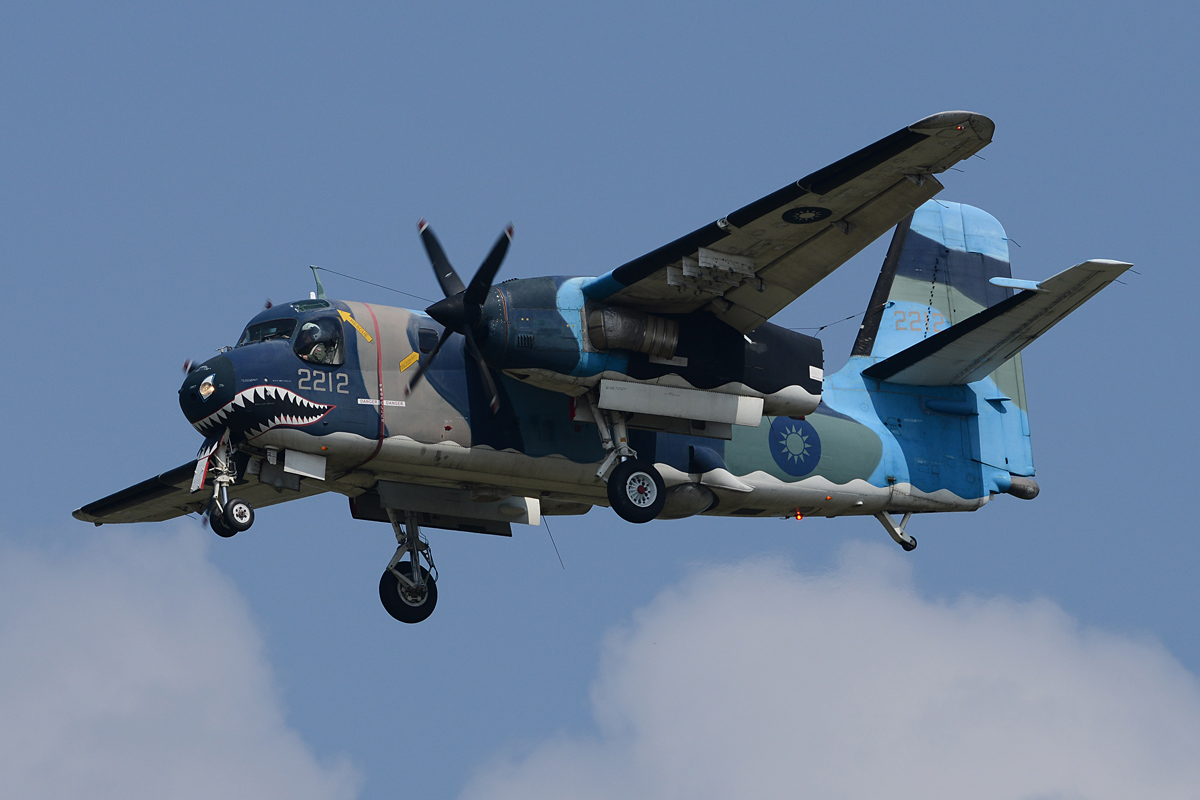
The S-2T’s most significant improvement over the previous S-2E/G version is that the original two Curtiss-Wright R-18210-82 piston engines, each rated at 1141 kW (1530 shaft horsepower), were replaced by Garret TPE-331-15AW turboprops. These are rated at 1227 kW (1645 shaft horsepower) and have four-blade propellers. The result of this improvement is an increase of 500 kg in payload. New mission equipment included digital sonobuoy processors, 99-channel sonobuoy receivers, radar, magnetic anomaly detectors (MAD) for anti-submarine warfare and forward looking infrared cameras (FLIR) of which the latter replaced the search light on the wing of the aircraft.
Due to aging of the aircraft its dispatchability has dropped significantly. At one time in 2000, the mission-capable rate dropped to around 25%, which translates to only six of twenty-six aircraft capable of operation. This number improved to around 50% later on. Current plans are to replace the S-2T with USN P-3Cs.
C-130H Hercules
In 1984, the Reagan administration of the US informed Congress of the proposed sale of 12 C-130Hs. These C-130s were to complement and eventually replace the aging C-119s in the fleet. The proposed sale by the US was later approved. The first two C-130Hs arrived at Pingtung on September 22, 1986. Four additional aircraft were ordered in the early 1990s, which arrived in January 1995. Two years later, in 1997, another contract for four more aircraft was signed. These aircraft were delivered on December 10 of the same year. Pallets with airline-style seats were ordered with these aircraft, enabling conversion for VIP transport. In the very same month of the arrival of the last four aircraft, all of the C-119s were decommissioned.
Northrop Grumman E-2T Hawkeye
Contracts for four E-2Ts were signed between the US and Taiwan in May 1993. The ‘T’ designator resembles Taiwan. These E2-T aircraft would be rebuilt E-2Bs, fitted with AN/APS-138 radars. The first aircraft was officially handed over to the ROCAF on May 9, 1995. Two more pairs arrived in Taiwan by sea in September of that same year. The US announced a further sale of two E-2T Hawkeye 2000s to Taiwan in 1999, together with two radars, engines, antenna groups, computer upgrade sets, spares and related support. Total cost: $400 million USD.
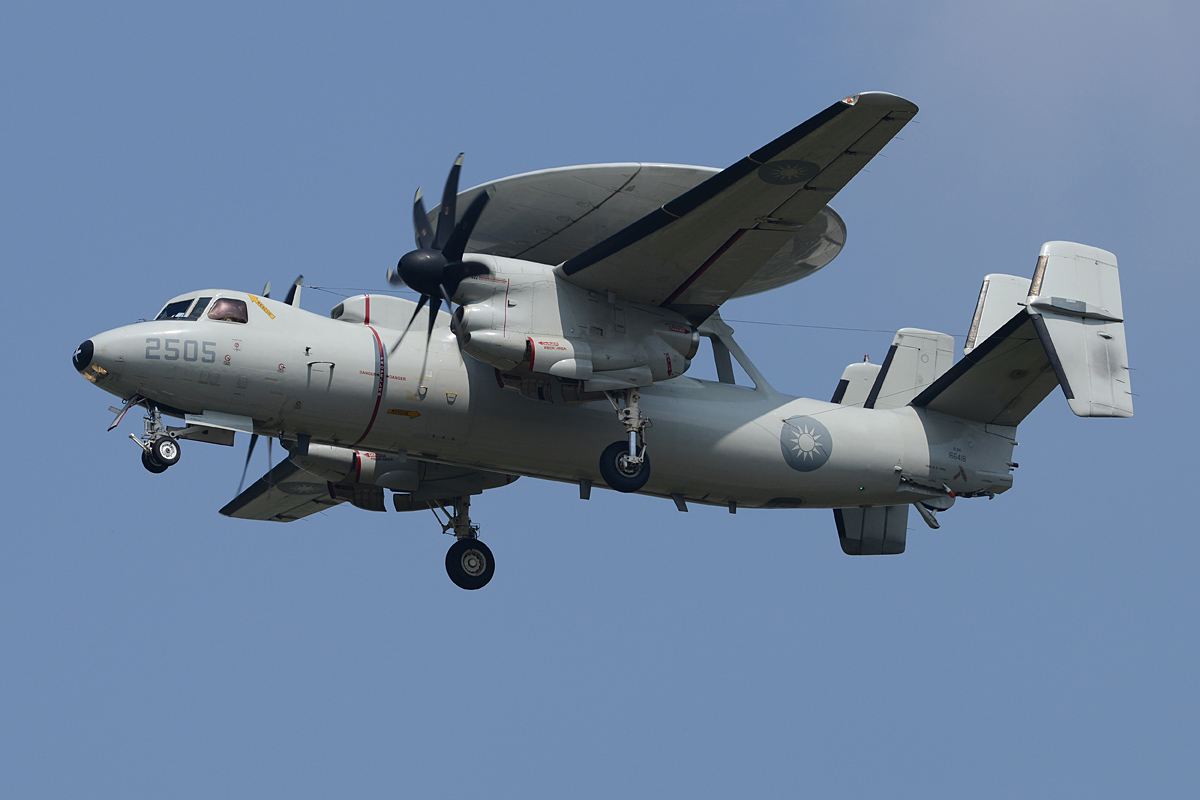
On August 10, 2004, the first of the two Hawkeye 2000s was accepted by ROCAF officials at Northrop Grumman’s St. Augustine facility in Florida. The second aircraft was received later that year. Both aircraft were transported to Taiwan by sea and arrived at the port of Kaoshiung on May 19, 2005.
Tainan
This field is half civil, half military. The shelters that provide cover for the 1st TFW are positioned on different locations on the field. The 1st TFW includes the 1st, 3rd and 9th TFG. All units fly with the F-CK-1 C/D. The C and D versions can be identified by the eagle incorporated on the tail.
AIDC F-CK-1
The AIDC F-CK-1 Ching Kuo Indigenous Defense Fighter is the complete name of the F-CK-1. Locals call it the IDF or Indigenous Defense Fighter. A total of four prototypes of these were built, three of which were single-seat aircraft. These single-seaters wore a blue-white-red livery. The fourth prototype was a two-seater and was the only prototype carrying a camouflage livery. Prototypes number 2, 3, and 4 made their first flights on September 27, 1989, January 10, 1990, and July 10, 1990, respectively.
Development of ten pre-production aircraft started in October of 1990. Six of these were single-seat and four of these were two-seat. They were delivered between 1992 and 1993. After the Bush administrated approved the sale of 150 Block 20 F-16A/B’s to Taiwan, the proposed number of IDFs to be built was cut from 250 to 130. The first production IDF was handed over to the ROCAF in January of 1994. The fuselage of the IDF closely resembles that of an F-16 and F/A-18. This is due to assistance in the development program from U.S. defense contractors. The cockpit is also very similar to that of an F-16, with the sidestick controller on the right, the throttles on the left and a Martin-Baker Mk.12 zero/zero ejection seat, sloped at thirty degrees. The IDF features an Elbit HUD, two Bendix MFDs and a Honeywell H432 inertial navigations system (INS). Allied Signals’ AiResearch Division helped design the environmental control system (ECS). The canopies on the pre-production aircraft and two-seaters are hinged on the starboard side and open to port; while those on production single-seat aircraft are hinged on the rear and open upward.

The IDF also has near-full-span wing flaperons and all-moving tailplanes. The airframe is mainly built out of metal. Exceptions are the rudder, radome, flaperons, and speedbrakes, which are made of composites. The single M-61 20mm cannon is mounted on the port wing strake corner. When the production program ended, a total of 131 IDFs were built. The last two production aircraft were delivered on January 14, 2000.
Hsinchu
This is the only field that has the Mirage stationed. The 2nd TFW consists of three TFG’s, namely the 41st, 42nd and 48th, operating the Mirage 2000-5Di & 5Ei. The total of 55 Mirages should be replaced by 2020. Politics play an important role here, so it remains to be seen whether it will be replaced (and with what).
Dassault Mirage 2000-5Di/Ei
France announced that it would offer Dassault Mirage 2000-5 fighter aircraft to Taiwan in 1992. There were rumors for delivery of 120 aircraft, but the deal was finalized as 60 aircraft on November 17 of the same year. 48 of these were single-seat 5Eis and 12 two-seat 5Dis.
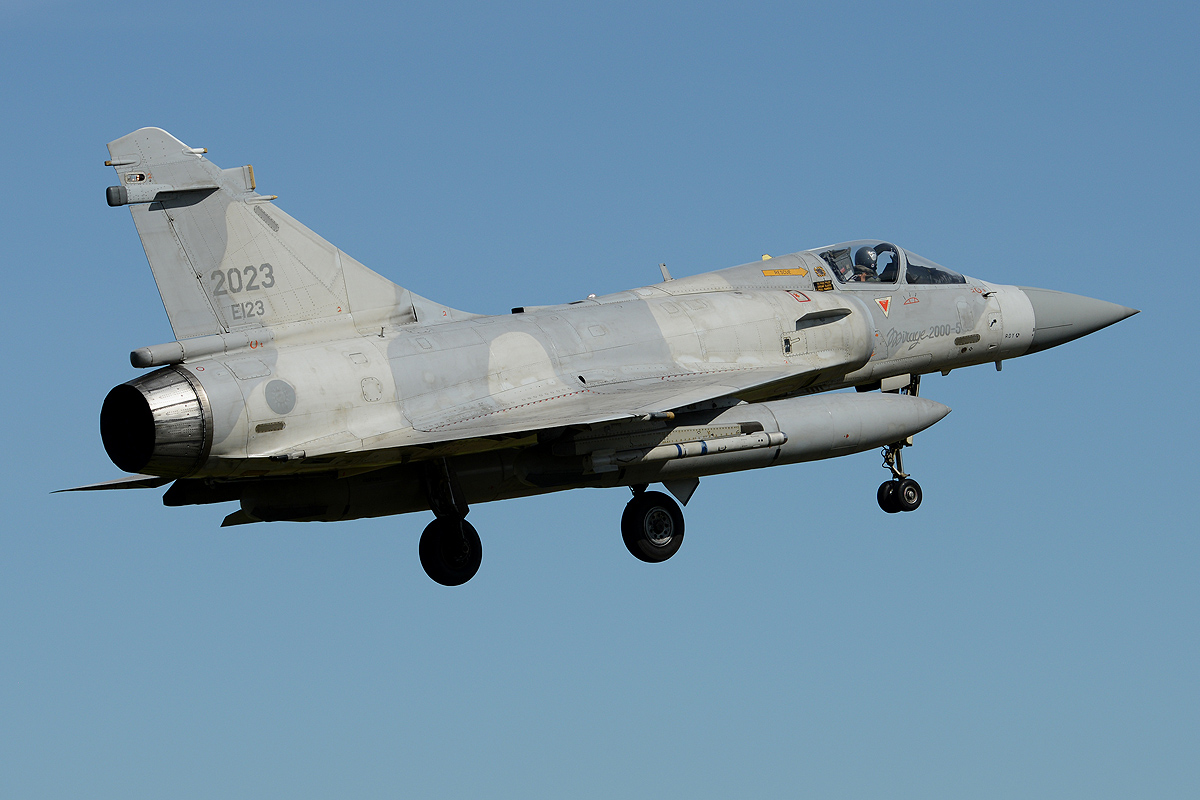
ROCAF also obtained 960 MICA medium-range and 480 Magic II short-range air-to-air missiles from Matra. The former provides the Mirage with beyond visual range capability, needed for its role as a front-line interceptor. The two-seaters were equipped with centerline twin gun pods with DEFA 554 cannons, as they did not have an internal gun armament. Support equipment such as auxiliary fuel tanks, helmets and G-suits were also obtained.
Gangshan
Gangshan is home to the Air Force Academy with all trainer aircraft owned by the Taiwanese Air Force stationed here. Fighter training is carried out with the AT-3B. Non-fighter training, the airlift training, is carried out with the Beech 1900C.
Beech T-34C Turbo Mentor
In order to replace the aging fleet of AIDC T-CH-1s used by the ROCAF Academy, 44 Beech T-34C Turbo Mentor aircraft were ordered in the early 1980s. Conversion began in January of 1985 and the ROCAF Academy started to use the T-34Cs as basic trainer in May of the same year. The T-CH-1s were phased out from the Academy.
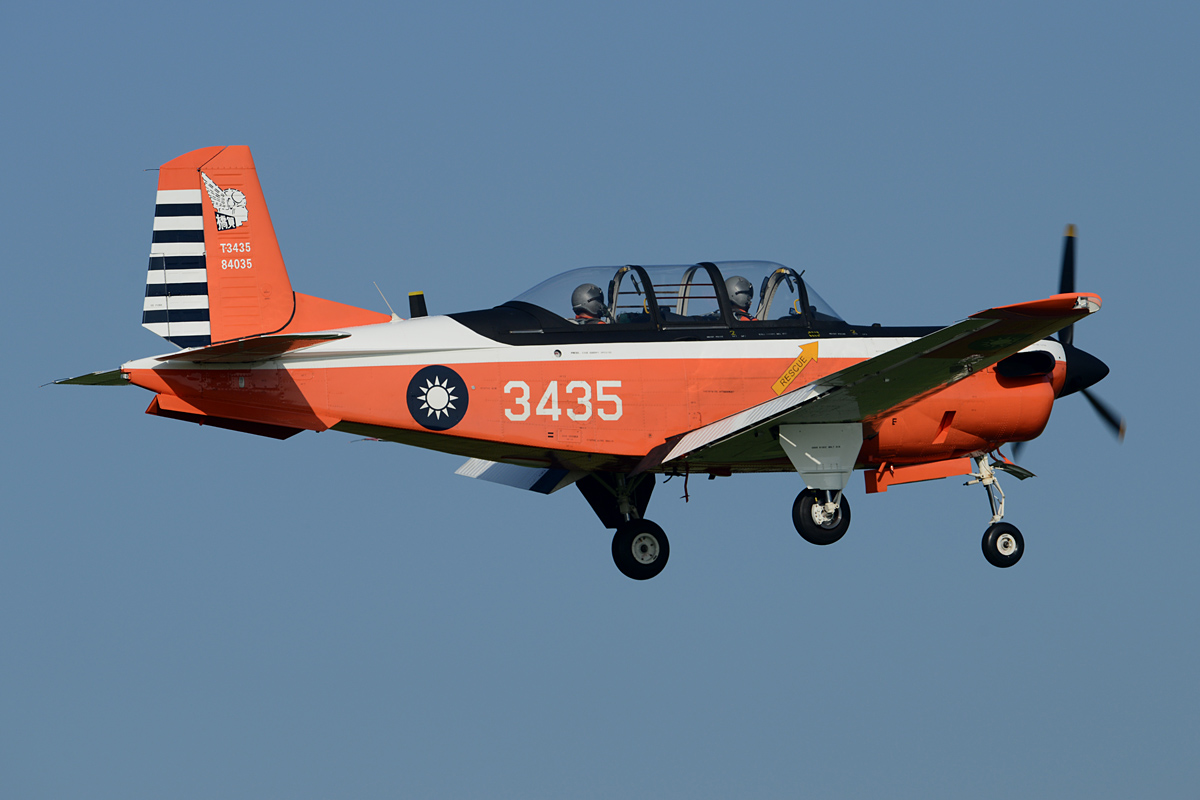
All T-34C aircraft are assigned to the ROCAF Academy at Gangshan. A ‘Flight Screening Program’ is conducted during the second semester of cadets’ second class year in the T-34C. This includes ten hours of flying. Individuals with the most potential to succeed at pilot training are selected during the spring semester of each cadet’s senior year. The selected candidates begin their ‘Basic Flight Training’ courses in their fifth class year. This includes 85 flying hours in the T-34C. After successful completion of this course, student pilots then move on to the ‘Advanced Flight Training’ where they either undergo fighter training or airlift training.
AIDC AT-3T
In order to replace the aging fleet of T-33As, the Aerospace Industrial Development Corporation began a study of an advanced jet trainer. It is on December 15, 1875, that the program gains it momentum when AIDC signs an agreement with Northrop to co-develop a single-engine jet trainer. The prototype was designated XAT-3. A change from the original single-engine layout to the current twin-engine design was approved by the Ministry of National Defense in 1976. The first of two prototype aircraft made its maiden flight on September 16, 1980. The second prototype first flew on October 30, 1981. The first production aircraft, re-designated as AT-3, was rolled out in an official ceremony on March 1, 1984. The aircraft was named ‘Tzu Chiang’, meaning gaining strength without relying on others, to boost morale. Delivery of the aircraft began in the same year and was completed in 1990. More than sixty of the type were delivered.

The aircraft features two Martin-Baker 10 zero/zero ejection seats in the dual-control cockpit. The ejection seats on the prototypes were of Northrop design. A crew of two sit in tandem, with the rear seat elevated 30 cm. All AT-3s use miniature detonation cord (MDC) systems to break the canopy in case of emergency. Production models are equipped with two Garrett TFE731-2-2L non-afterburning turbofan engines, producing a total thrust of 31.1 kN; 7000 lb.
Weapons carried by the AT-3 include Mk 82 bombs, Mk 20 cluster bombs, 2.75/5-inch rocket pods, 20mm gun pods and heat-seeking air-to-air missiles such as the AIM-9.
Chiayi
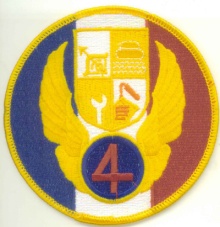
4 TFW (455 TFW)
This air base is home to the 4th TWF, which flies with the F-16A/B. Some S-70Cs of the Air Rescue Squadron are stationed here as well. The 4th TWF consists of the 21st TFG, 22nd TFG and the 23rd TFG.
Lockheed Martin F-16A/B Fighting Falcon
The ROCAF expressed interest in acquiring F-16s since the late 1970s. General Dynamics responded to this foreign request by offering a downgraded variant, the F-16/79. Political concerns had kept the sale of the F-16 to Taiwan from materializing for about fifteen years, until the early 1990s. US President George Bush approved the sale of 120 F-16As and 30 F-16Bs to Taiwan in 1992 during his presidential re-election campaign. Reportedly, this was the second largest foreign military sale in US history up to that time. The F-16s were not of the C/D version that the ROCAF had wanted, but the A/B versions in question were far more advanced than the earlier versions. This made Lockheed Martin give them a new block number designation, block 20. The ROCAF F-16s are roughly equivalent to the Mid-Life Update (MLU) version.
The Block 20 F-16A/B has ALR-56M advanced radar warning receivers and AN/ALE-47 chaff/flare dispensers. The cockpit is night vision goggle compatible. All ROCAF F-16 A/Bs are powered by the F100-PW-220 turbofan engine. The aircraft are capable of inflight refueling, but there is no tanker aircraft present in the ROCAF fleet. The ROCAF ordered 80 Raytheon electronic countermeasure (ECM) pods as jammers. The F16s initially did not have the software required for firing the AIM-120 AMRAAM air-to-air missiles. Instead, 600 AIM-7M Sparrow and 900 AIM-9M Sidewinder missiles were ordered. Initially the F-16 also lacked ground attack capabilities.

The ROCAF F-16’s potential was greatly boosted when the US government approved several arms sales in 1998. In the four years following this approval, several upgrades and additions have been made to the ROCAF F16s. These include 28 sets of Pathfinder/Sharpshooter navigation & targeting pods, 58 air-launch AGM-84L Harpoon missiles, 200 AIM-120C and 292 launchers and many more. The F16’s Mission Modular Computer (MMC) was upgraded in 2002.
In response to President Jimmy Carter’s February 1977 directive to curtail arms proliferation by selling only reduced-capability weapons to foreign countries, General Dynamics developed a modified export-oriented version of the F-16A/B designed for use with the outdated General Electric J79 turbojet engine.
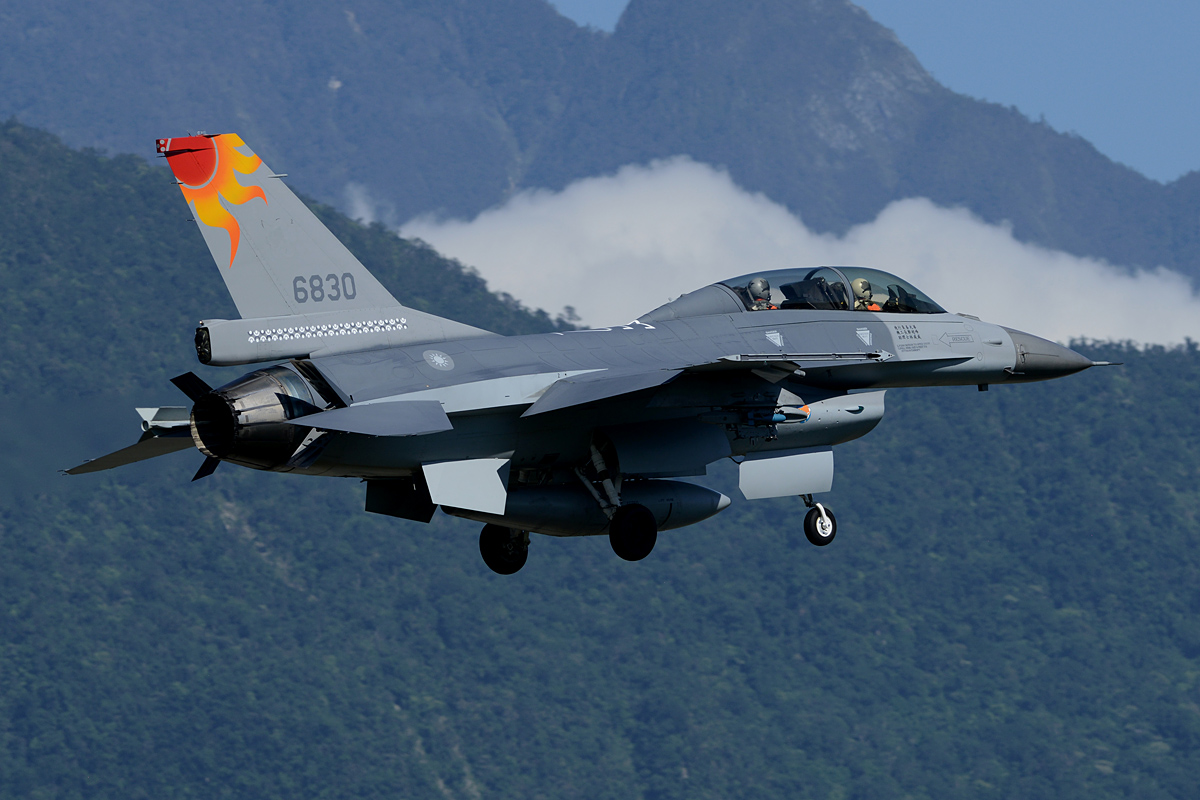



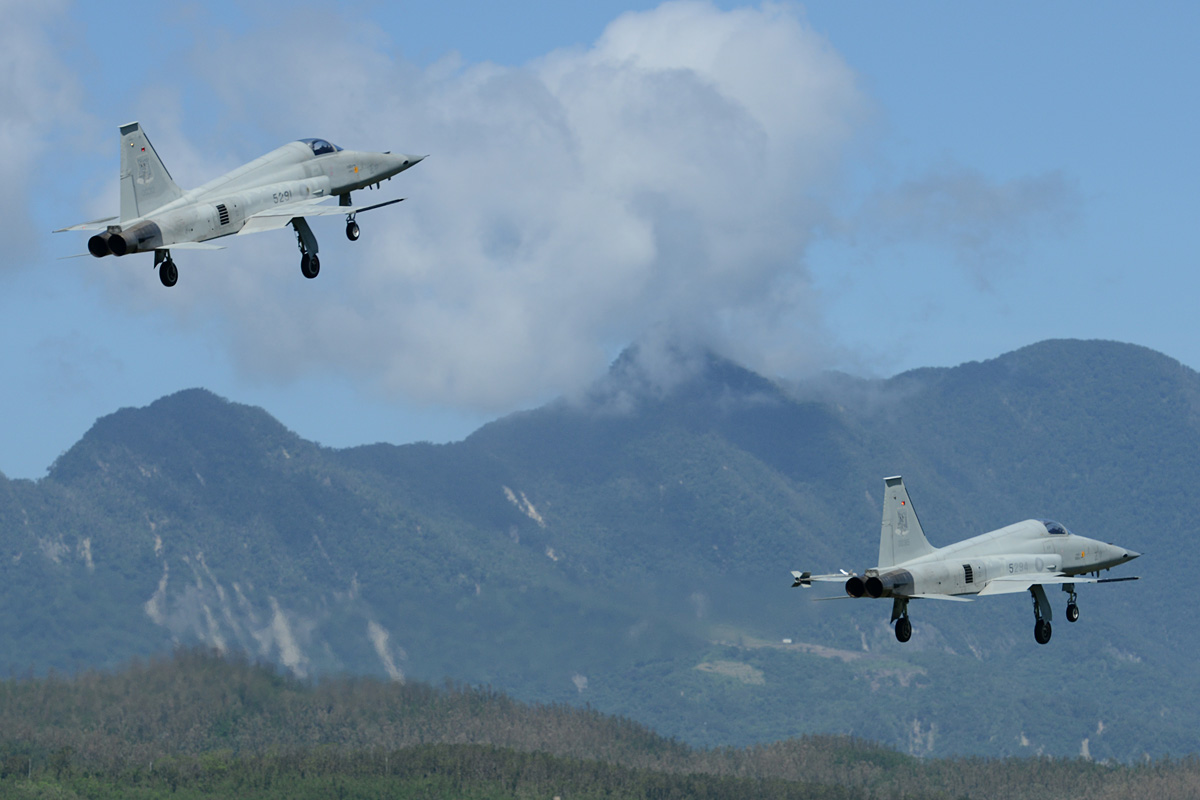

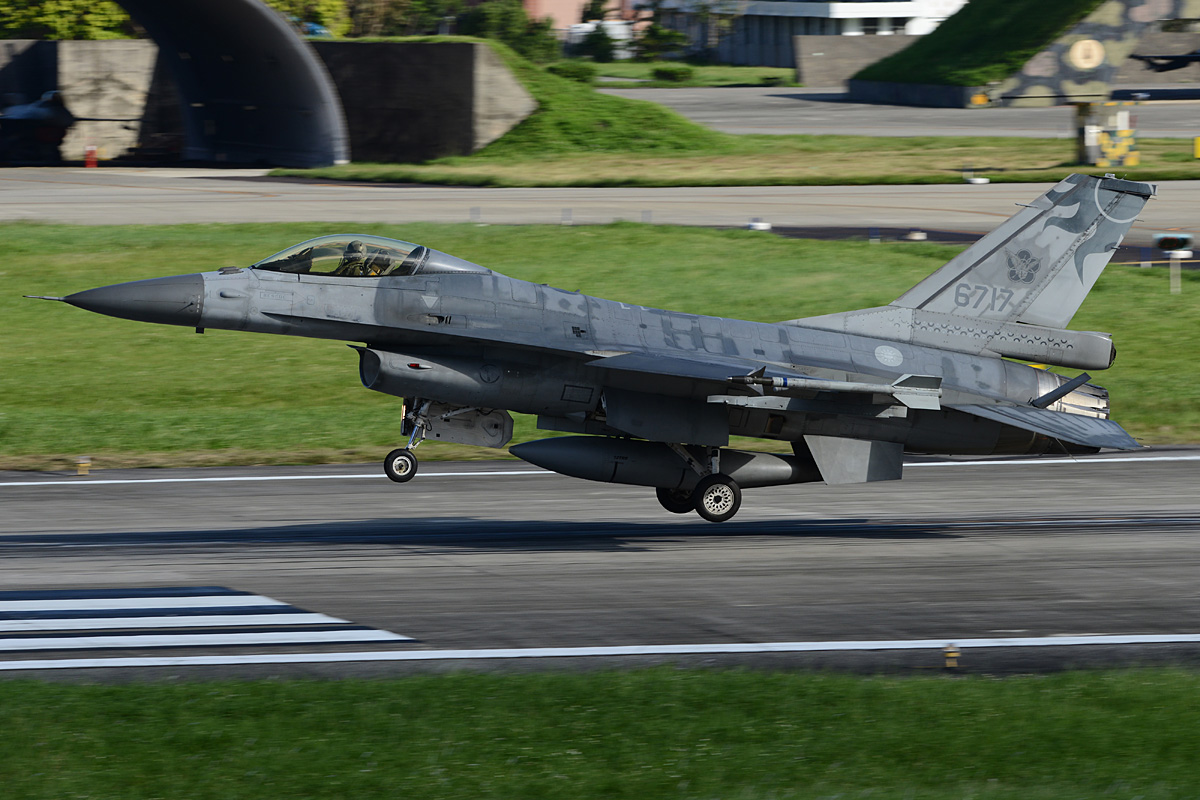


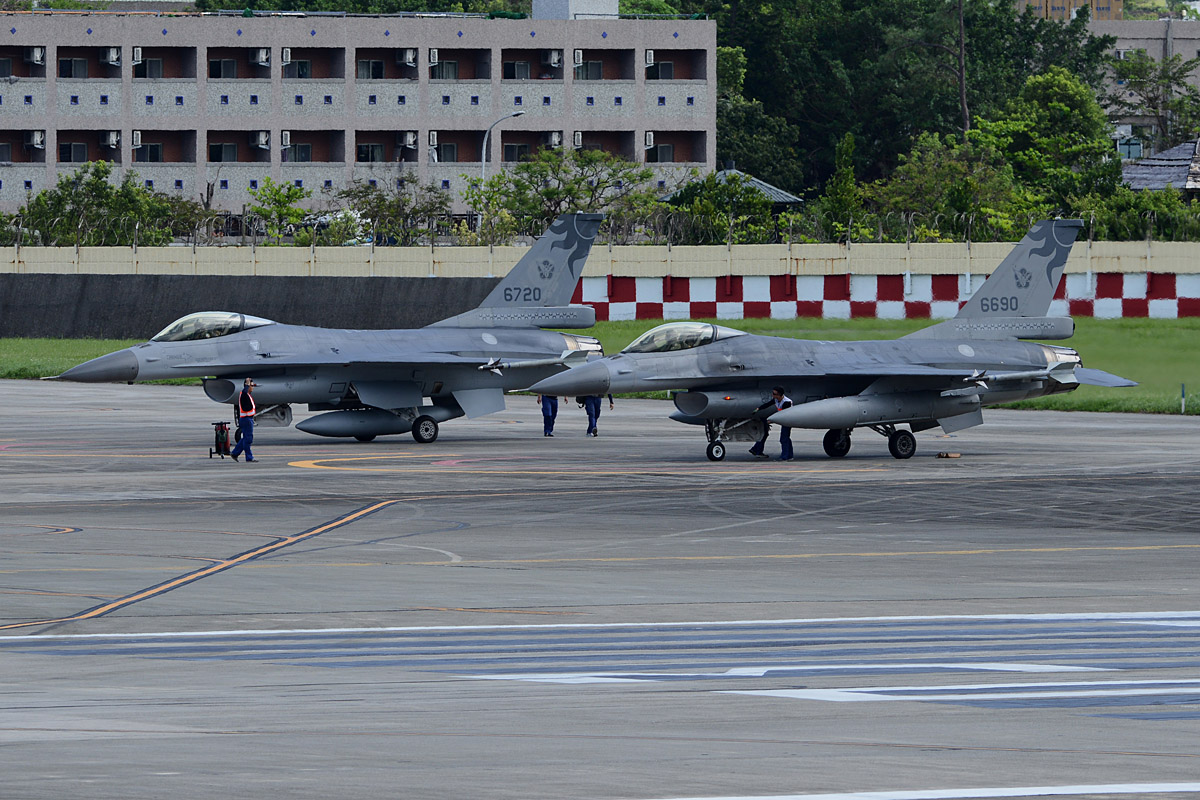

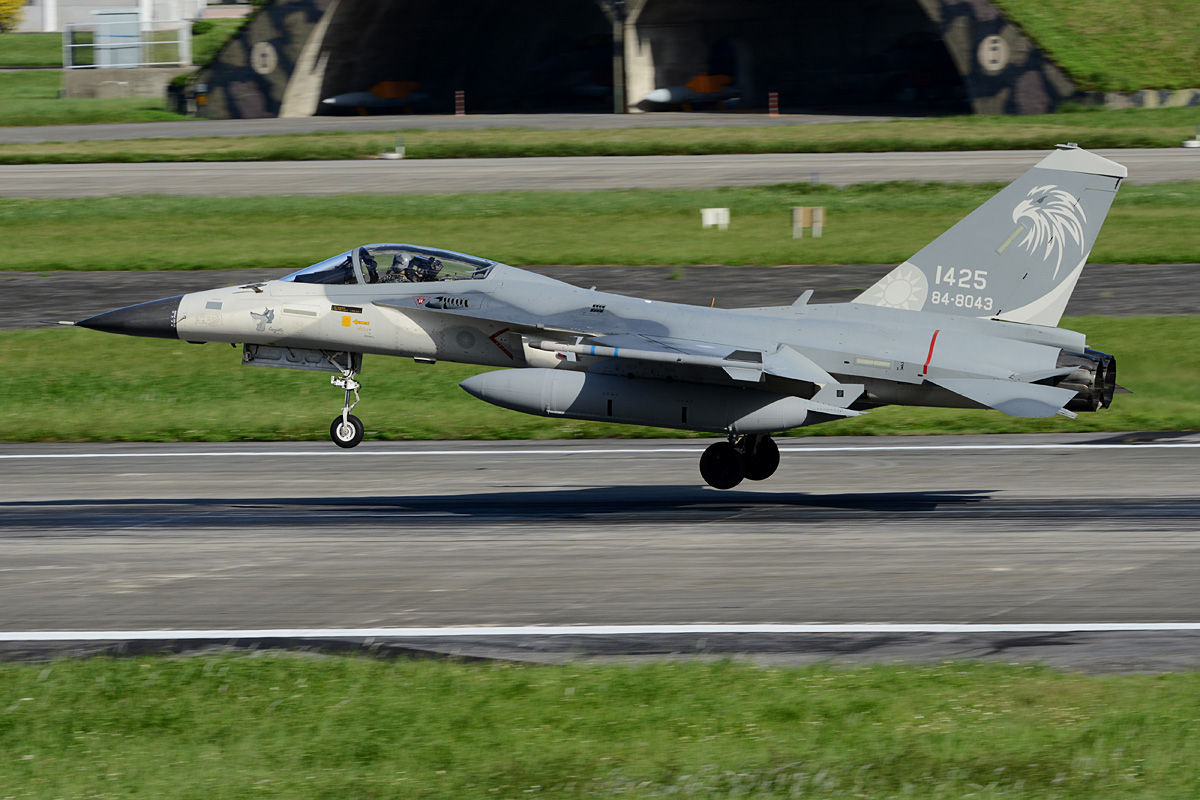
Click on an image below to page or swipe through the gallery:


